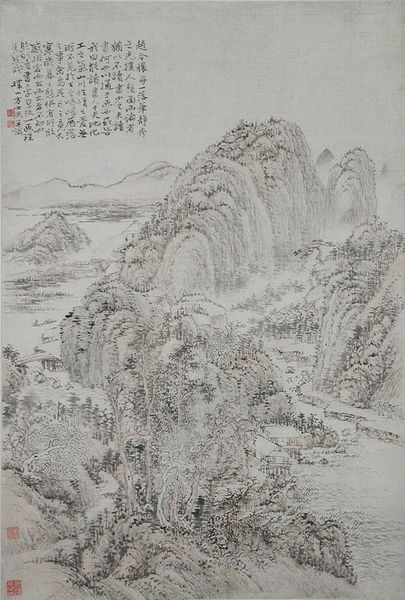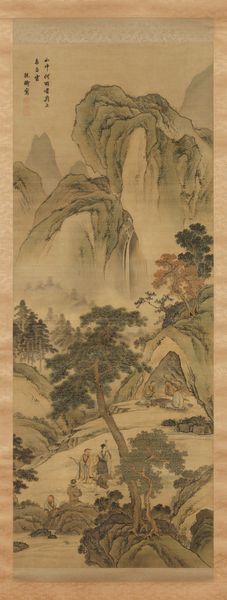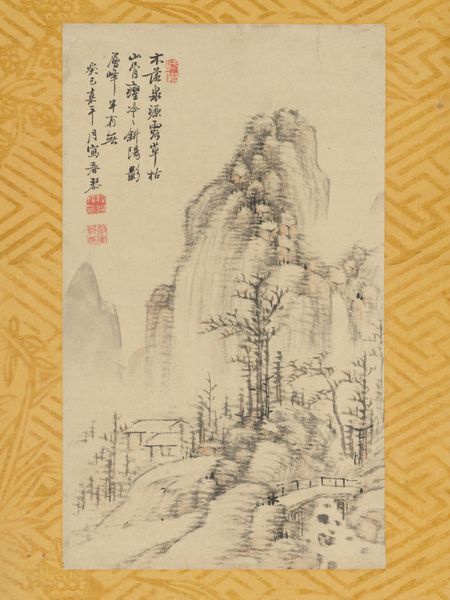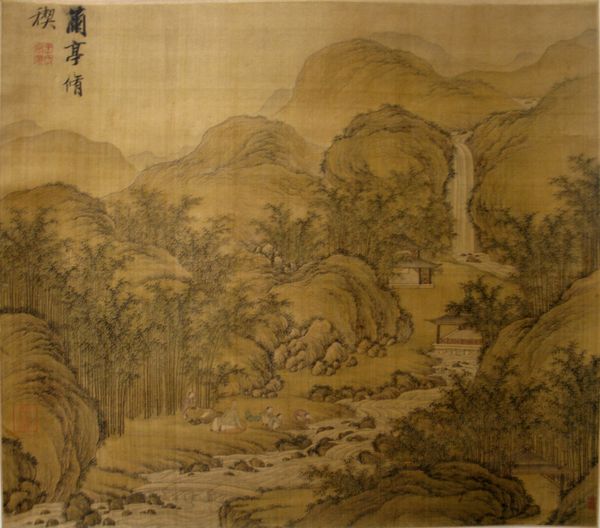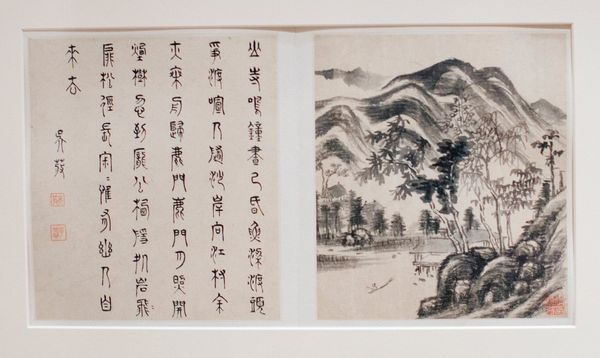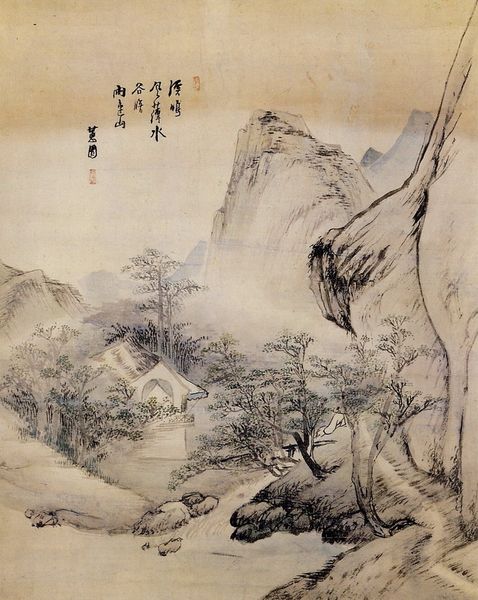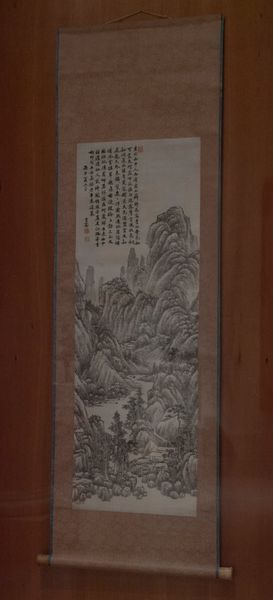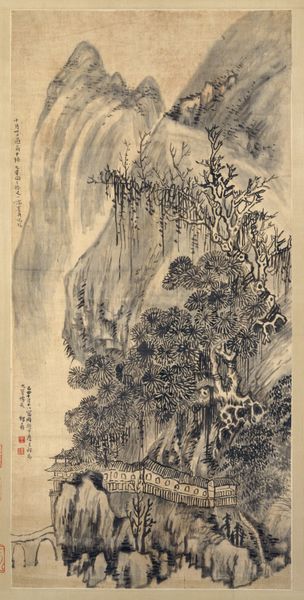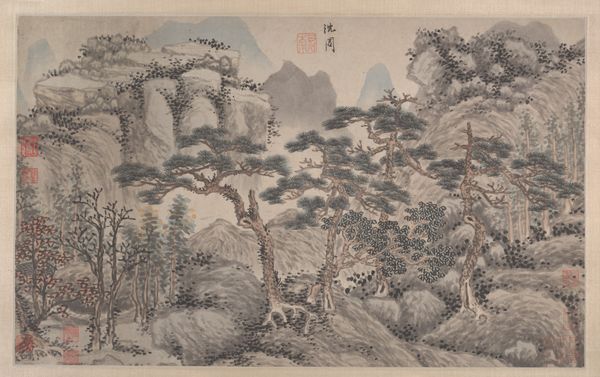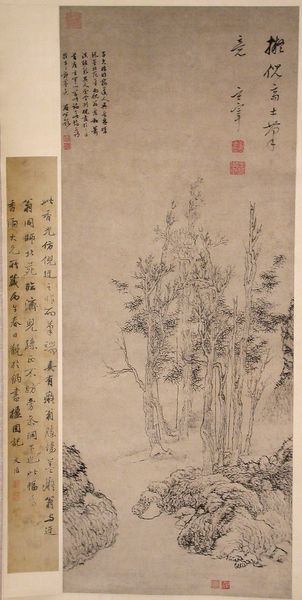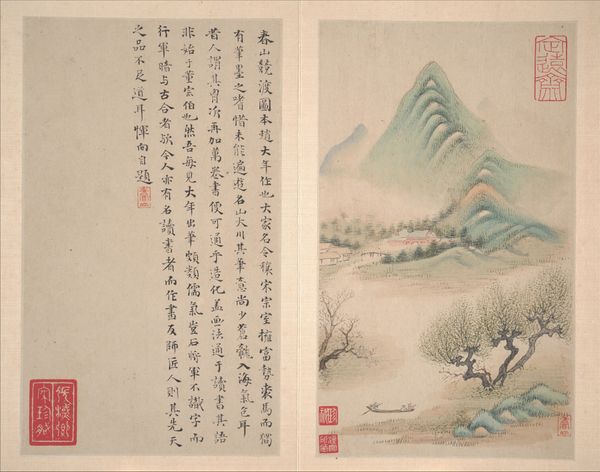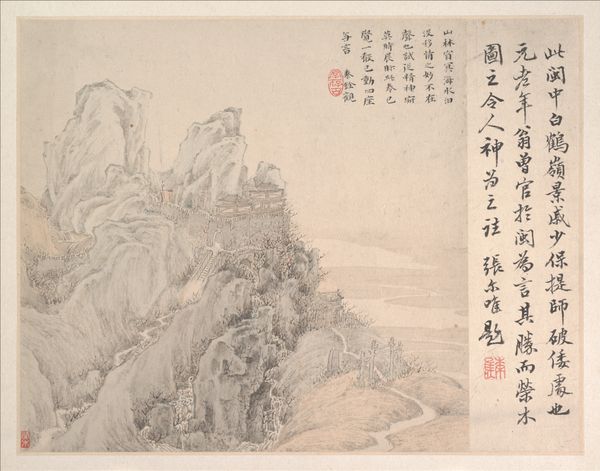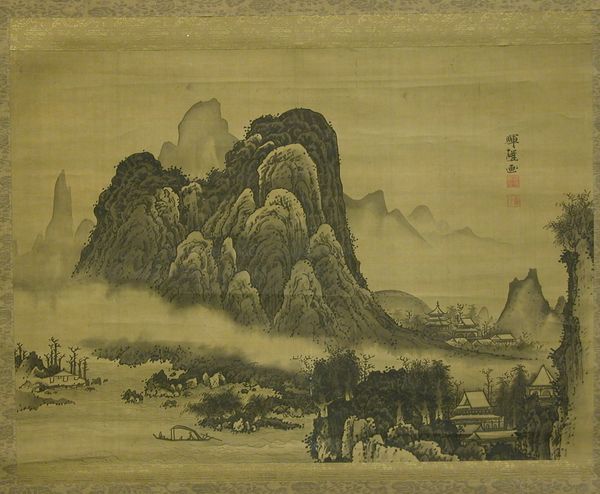
drawing, painting, paper, ink
#
drawing
#
painting
#
asian-art
#
landscape
#
paper
#
ink
#
mountain
Dimensions: Image: 48 7/8 x 15 1/8 in. (124.1 x 38.4 cm) Overall with mounting: 87 3/8 x 30 1/8 in. (221.9 x 76.5 cm) Overall with knobs: 87 3/8 x 34 1/2 in. (221.9 x 87.6 cm)
Copyright: Public Domain
Editor: Lu Zhi’s "Mei Cheng Sitting Alone," created sometime between 1495 and 1576, uses ink on paper to portray a sweeping landscape. It’s really striking how the towering mountains seem to dwarf everything else. What can you tell me about it? Curator: This ink painting exemplifies the scholar-artist tradition. Notice the inscriptions; these are integral, reflecting social networks and artistic validation. Literati painting served a public function, demonstrating cultivation and philosophical alignment with prevailing Confucian or Daoist ideals. Consider how landscapes, often rendered in monochrome ink, became vehicles for expressing social harmony and individual morality during periods of political instability. What does the solitary figure suggest to you? Editor: It makes me think about the individual's place within society, maybe even a bit of detachment. But also, it reminds me about people like Tao Qian who remove themselves from government and are still written about. Curator: Exactly! These images weren’t just pretty pictures. They were statements about social roles and artistic identity. The “alone” suggests a complex mix of independence and critique of the existing socio-political climate, referencing a legacy of scholars and poets who chose alternative paths. How do you think viewing these paintings in a museum setting today changes our understanding? Editor: That’s a great point. Seeing it divorced from its original context in the Met, we focus more on its aesthetic qualities but can miss those powerful social commentaries. Curator: Precisely. By analyzing the historical context, we understand the artist's motivations and the complex relationships between art, power, and social commentary. Editor: I’ll definitely look at these landscapes differently now. Thinking about the message beyond just the mountains! Curator: Remembering the intertwined connections between the art and the times, the individual and the state.
Comments
No comments
Be the first to comment and join the conversation on the ultimate creative platform.
